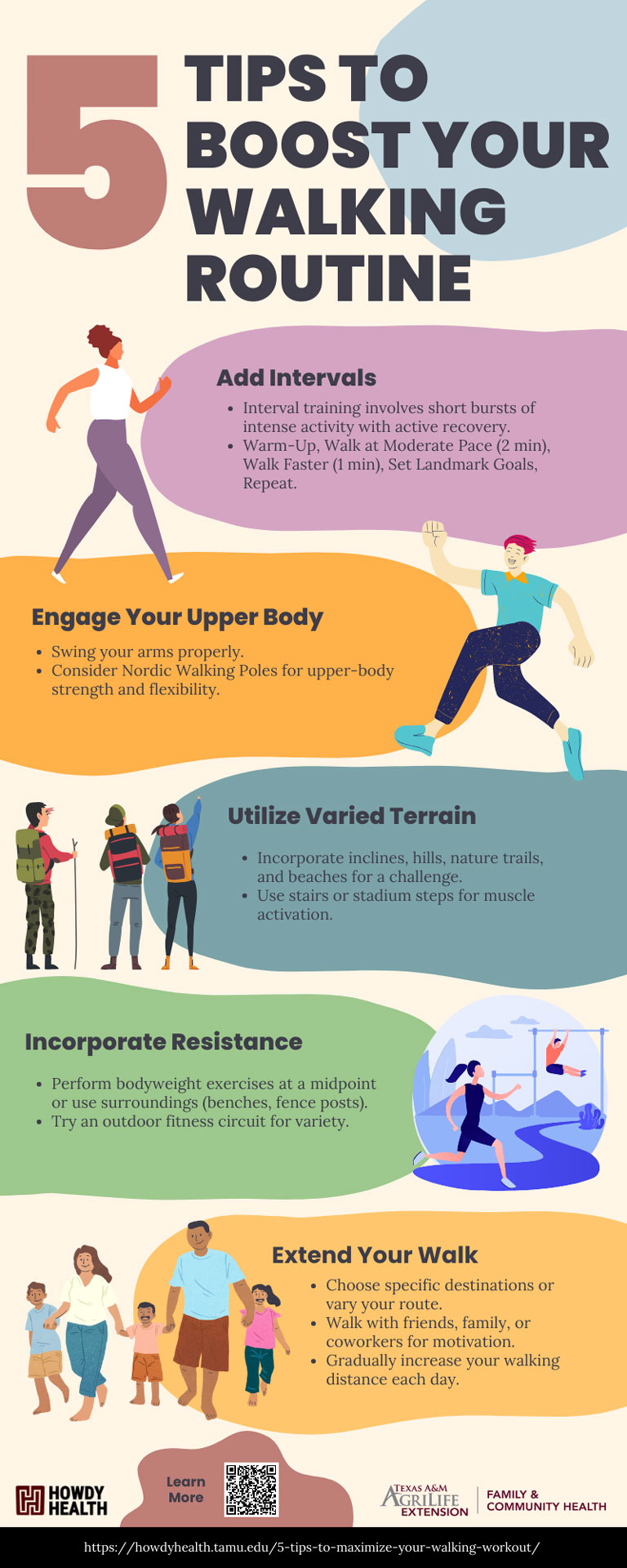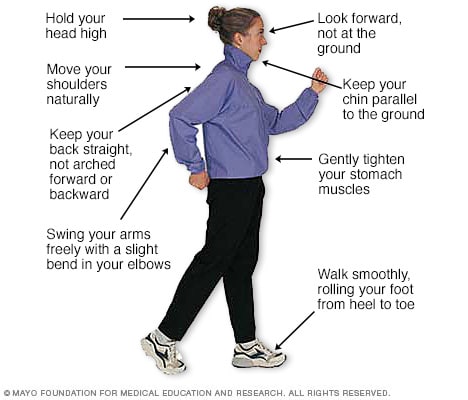How Do You Train for Long Distance Walking? Discover the Most Effective Techniques
To train for long distance walking, gradually increase your mileage while focusing on proper form and staying consistent. Incorporate cross-training and rest days to prevent injury and build endurance.
Long distance walking requires a tailored training approach to ensure you build the necessary stamina and strength. Training for long distance walking involves a structured plan that gradually increases your mileage, incorporates cross-training activities, and includes rest days to allow your body to recover.
It’s important to focus on proper form and pace, as well as staying consistent with your training routine. In this guide, we will explore effective strategies for training for long distance walking, including tips for building endurance, preventing injury, and preparing both mentally and physically for the challenge. Whether you’re training for a walking event or simply aiming to increase your overall fitness, these tips will help you achieve your long distance walking goals.

Credit: howdyhealth.tamu.edu
Benefits Of Long Distance Walking
To train for long distance walking, start with gradual increases in mileage, incorporate strength training, and focus on proper form and footwear. Consistent practice and adequate rest are key to enhancing endurance and preventing injuries during long hauls.
Improves Cardiovascular Health
Walking long distances strengthens the heart, improving overall cardiovascular health.
Enhances Endurance
Long distance walking boosts endurance levels for sustained physical activity.
Essential Gear For Long Distance Walking
Long distance walking is a fantastic way to stay active and enjoy the outdoors. To prepare for such endeavors, it’s essential to have the right gear. Investing in the right equipment can make your walking experience more enjoyable and comfortable. Here are some key essentials to consider for long distance walking:
Choosing The Right Footwear
Proper footwear is crucial for long distance walking. Select shoes that provide ample support, cushioning, and stability. Look for walking shoes or trail shoes that are specifically designed for long distance journeys. Ensure a proper fit to avoid discomfort and blisters. Consider getting shoes with breathable materials to keep your feet dry and comfortable.
Selecting Suitable Clothing
When it comes to long distance walking, choosing the right clothing is essential for comfort and performance. Opt for moisture-wicking fabrics that draw sweat away from your skin, keeping you dry and comfortable. Wear lightweight, breathable layers to regulate your body temperature. Consider investing in moisture-resistant outer layers to protect against unexpected weather changes.
Physical Training For Long Distance Walking
Physical training is a vital part of preparing for long distance walking. Building endurance and strength, as well as incorporating interval training, can help you increase your overall stamina and reduce the risk of injury. In this section, we will explore these training methods in detail to help you achieve your long distance walking goals.
Building Endurance And Strength
Endurance and strength training are key components of preparing your body for long distance walking. By gradually increasing the duration and intensity of your workouts, you can build up your cardiovascular fitness and muscular strength.
To improve endurance, incorporate brisk walking or jogging into your training regimen. Start with shorter distances and gradually increase the duration and pace over time. This will help improve your lung capacity and overall cardiovascular fitness, allowing you to walk longer distances with ease.
Strength training is equally important for long distance walking. Incorporate exercises that target the muscles used in walking, such as the legs, hips, and core. Squats, lunges, and calf raises are all effective exercises to include in your strength training routine. Aim to perform two to three strength training sessions per week, focusing on higher repetitions and lower weights.
In addition to specific exercises, it’s important to maintain a balanced and nutritious diet to support your physical training. Fueling your body with the right nutrients will provide the energy and nutrients necessary for optimal performance.
Incorporating Interval Training
Interval training is a highly effective way to improve both your endurance and speed for long distance walking. By alternating between periods of high-intensity exercise and recovery, you can challenge your cardiovascular system and increase your overall fitness level.
An example of interval training for long distance walking is the ‘run-walk’ method. Start by jogging for a set period, such as one minute, and then switch to walking for a brief recovery period, such as 30 seconds. Repeat this cycle for a designated duration, gradually increasing the intensity and reducing the rest intervals as your fitness improves.
Interval training not only enhances your aerobic capacity but also helps to build mental resilience. By pushing your body beyond its comfort zone, you train yourself to handle the physical demands of long distance walking, enabling you to maintain a consistent pace for extended periods.
Remember to always listen to your body during training and modify the intensity and duration of your workouts as needed. Gradually increase the difficulty of your training sessions, allowing for proper rest and recovery to prevent overuse injuries.

Credit: www.mayoclinic.org
Nutritional Tips For Long Distance Walking
To train for long distance walking, it’s essential to focus on a balanced nutrition plan. Prioritize whole foods, including lean protein, complex carbohydrates, healthy fats, and hydrating liquids. Incorporating regular, moderate exercise sessions can help build endurance and prepare your body for extended walks.
Implementing strength training exercises alongside your regular walking routine can also help improve overall fitness and endurance.
Nutritional Tips for Long Distance WalkingHydration Strategies
Stay hydrated by drinking water at regular intervals throughout the walk.
Consider using electrolyte drinks to replenish lost minerals during long walks.
Balanced Diet Recommendations
Eat a well-balanced meal before starting a long distance walk.
Include a mix of carbohydrates, proteins, and fats in your diet.
Incorporate nutrient-dense foods like fruits, nuts, and whole grains.
Hydration Strategies
| Tip | Details |
|---|---|
| Drink Regularly | Consume water at frequent intervals during your walk. |
| Electrolytes Drinks | Consider electrolyte-rich beverages to maintain balance. |
Balanced Diet Recommendations
- Meal Before Walk
- Consume a balanced meal before embarking on your walk.
- Mix of Nutrients
- Include carbohydrates, proteins, and fats for energy.
- Nutrient-Dense Foods
- Opt for fruits, nuts, whole grains for sustained energy.

Credit: www.pinterest.com
Frequently Asked Questions Of How Do You Train For Long Distance Walking?
How Do You Build Stamina For Long Walks?
To build stamina for long walks, gradually increase your walking distance and pace over time. Incorporate regular cardio exercises like cycling or swimming to improve endurance. Stay hydrated, wear comfortable shoes, and maintain proper posture while walking. Remember to warm up and cool down before and after each walk.
How Can I Improve My Walking Distance?
To improve your walking distance, gradually increase your walks each week. Aim for 30 minutes of brisk walking most days of the week. Wear comfortable shoes, keep good posture, and maintain a consistent pace. Remember to warm up and cool down before and after your walks.
How Do I Train For A 100 Mile Walk?
To train for a 100-mile walk, gradually increase your mileage each week. Focus on long walks, strength training, and stretching to build endurance and prevent injuries. Wear comfortable shoes and stay hydrated during training. Listen to your body and rest when needed.
Good luck!
How Do I Strengthen My Legs For Long Distance Walking?
To strengthen legs for long distance walking, include exercises like squats, lunges, calf raises, and leg presses in your routine. Consistency is key for building endurance. Proper hydration and nutrition are also crucial for muscle recovery and performance.
Conclusion
Whether you’re a beginner or seasoned walker, following these tips will prepare you for long-distance walks. Remember to gradually increase your mileage, wear proper footwear, and stay hydrated. Incorporating strength training and rest days is essential for optimal performance. Stay consistent, listen to your body, and enjoy the journey.






